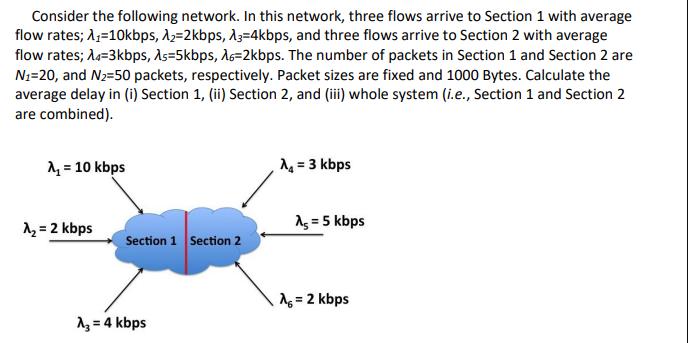Answered step by step
Verified Expert Solution
Question
1 Approved Answer
Consider the following network. In this network, three flows arrive to Section 1 with average flow rates; -10kbps, A=2kbps, A3=4kbps, and three flows arrive

Consider the following network. In this network, three flows arrive to Section 1 with average flow rates; -10kbps, A=2kbps, A3=4kbps, and three flows arrive to Section 2 with average flow rates; A4-3kbps, As-5kbps, A6-2kbps. The number of packets in Section 1 and Section 2 are N=20, and N=50 packets, respectively. Packet sizes are fixed and 1000 Bytes. Calculate the average delay in (i) Section 1, (ii) Section 2, and (iii) whole system (i.e., Section 1 and Section 2 are combined). A = 10 kbps A = 2 kbps Section 1 Section 2 A = 4 kbps A = 3 kbps A5 = 5 kbps = 2 kbps
Step by Step Solution
★★★★★
3.45 Rating (155 Votes )
There are 3 Steps involved in it
Step: 1

Get Instant Access to Expert-Tailored Solutions
See step-by-step solutions with expert insights and AI powered tools for academic success
Step: 2

Step: 3

Ace Your Homework with AI
Get the answers you need in no time with our AI-driven, step-by-step assistance
Get Started


